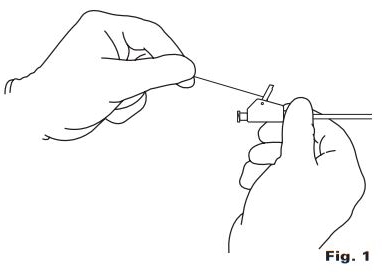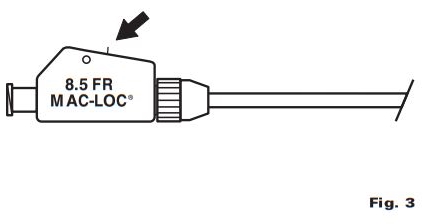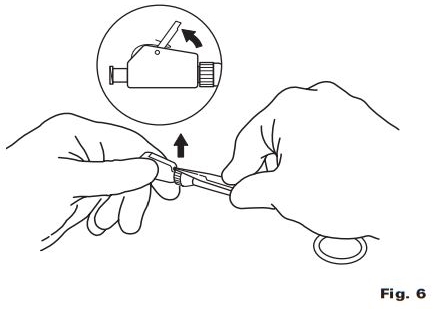-
Catheters (6,800+)
- Angiocatheters (50+)
- Closed System Catheters (300+)
- External Catheters (620+)
- Hydrophilic Catheters (140+)
- IV Catheters (1,200+)
- Non-Hydrophilic (20+)
- Plastic Catheters (200+)
- Rubber Catheters (700+)
- Silicone Catheters (770+)
- Ureteral Catheters (100+)
- Urethral Catheters (450+)
- Venous Catheters (240+)
-
Coronavirus (20,000+)
- Bacterial Filters (170+)
- Bleach (360+)
- Coveralls (500+)
- Disinfectant Wipes (350+)
- Face Shields (200+)
- Gloves (8,000+)
- Gowns (2,300+)
- Isopropyl Alcohol (170+)
- IV Therapy (2,000+)
- Masks (3,700+)
- Pulse Oximeters (250+)
- Sanitizer (670+)
- Scrubs (20,000+)
- Soap (1,500+)
- Stethoscopes (700+)
- Thermometers (950+)
- Custom Kits
- Dental (14,000+)
- Gloves (8,000+)
-
Gynecology & Urology (1,000+)
- Bed Side Drainage Bags (350+)
- Circumcision (150+)
- Cord Clamps and Clippers (60+)
- Disposable Vaginal Specula (60+)
- Enema Bags (30+)
- External Catheters (620+)
- Foley Catheters and Trays (1,200+)
- Identification (1100+)
- Leg Bag Accessories (10+)
- Leg Bags (280+)
- Reusable Vaginal Specula (900+)
- Specimen Collection (200+)
- Tubing & Connectors (17,000+)
- Urinals / Bed Pans (1,300+)
- Urine Collectors (60+)
- Urological Irrigation Products (10+)
- Vaginal Specula Illumination (2+)
- Systems (11,000+)
- Hygiene (1,000+)
- Incontinence (1,000+)
-
Infection Control (2,500+)
- Bacterial Filters (170+)
- Bleach (360+)
- Coveralls (500+)
- Disinfectant Wipes (350+)
- Face Shields (200+)
- Gloves (8,000+)
- Gowns (2,300+)
- Iodine (460+)
- Isopropyl Alcohol (170+)
- IV Therapy (2,000+)
- Masks (3,700+)
- Pulse Oximeters (250+)
- Sanitizer (670+)
- Soap (1,500+)
- Stethoscopes (700+)
- Thermometers (950+)
- Infusion All (2,000+)
- IV Bags - Empty (300+)
- IV Bags - Filled (100+)
- Masks (3,800+)
-
Medical Apparel (23,000+)
- Arm Sleeves (240+)
- Beard Covers (20+)
- Bouffant Caps (200+)
- Compression Socks (80+)
- Coveralls (500+)
- Disposables (100+)
- Isolation Gowns (360+)
- Lab Coats (2,200+)
- Lab Jackets (300+)
- Patient Gowns (300+)
- Procedural Gowns (230+)
- Scrubs (20,000+)
- Shoe Covers (270+)
- Surgeon Caps (40+)
- Surgical Gowns (70+)
- Surgical Hoods (20+)
- Surgical Masks (330+)
- Ostomy (400+)
-
PPE (20,000+)
- Bacterial Filters (170+)
- Bleach (360+)
- Coveralls (500+)
- Disinfectant Wipes (350+)
- Face Shields (200+)
- Gloves (8,000+)
- Gowns (2,300+)
- Isopropyl Alcohol (170+)
- IV Therapy (2,000+)
- Masks (3,700+)
- Pulse Oximeters (250+)
- Sanitizer (670+)
- Scrubs (23,000+)
- Soap (1,500+)
- Stethoscopes (700+)
- Thermometers (950+)
- Respiratory (500+)
- Sanitizer (600+)
- Surgical Supplies (14,000+)
- Sutures (7,500+)
- Syringes & Needles (14,000+)
-
Wound Care (5,000+)
- ABD Pads (100+)
- Adhesive Bandages (650+)
- Advanced Wound Care (400+)
- Applicators (6,700+)
- Burn care (240+)
- Dressings (7,500+)
- Elastic Bandages (1,600+)
- Gauze (3,300+)
- Ice / Heat Packs (280+)
- Medical Tape (820+)
- Non-Adhering Dressings (100+)
- Ointment & Solutions (450+)
- Self-Adherent Wraps (200+)
- Sponges (2,400+)
- Staple & Suture Removal (1,500+)
- Tegaderm (450+)
- Transparent Dressing (800+)
- Wound Care Prep (120+)
- Wound Cleansers (100+)
- Sales & Deals (100+)
- 3M (4,200+)
- Alaris Medical (600+)
- Amsino International (550+)
- Avanos Medical (40+)
- B Braun (1,500+)
- Baxter (750+)
- BD (2,800+)
- BSN Medical (2,000+)
- Cables & Sensors (3,200+)
- C.R. Bard (4,200+)
- Cardinal Health (6,800+)
- CareFusion (2,100+)
- ConMed (1,500+)
- Cook Medical (600+)
- Covidien (9,500+)
- DeRoyal (6,000+)
- Dukal (1,300+)
- Ethicon (4,100+)
- GE Healthcare (1,000+)
- Hartmann (600+)
- Hospira (530+)
- ICU Medical (1,700+)
- Masimo (170+)
- Medline (54,000+)
- Midmark (2,500+)
- Roche (300+)
- Smiths Medical (4,000+)
- Sunset Healthcare (450+)
- TrueCare Biomedix (20+)
- View All Brands (5,000+)

Cook Medical G51595 - DRAINAGE, ULT6.3-35-25-P-5S-CLDM-HC, EACH
Dawson-Mueller Multipurpose Drainage Catheter
Multipurpose Drainage Catheters are constructed from Ultrathane or polyethylene and come in a range of French sizes, lengths and sideport quantities. Locking Loop Catheters are available with one of three types of locking mechanisms:
- Mac-Loc Locking Loop
- Simp-Loc Locking Loop
- Cook-Cope Type Loop
When ordered with the suffix - HC, the distal part of the catheter, sideports included, has an AQ hydrophilic coating.
| Order Number | Reference Part Number | Catheter (Fr) | Accepts Wire Guide Diameter (inch) | Catheter Length (cm) |
| G51595 | ULT6.3-35-25-P-5S-CLDM-HC | 6.3 | 0.035 | 25 |
Features and Benefits
- The Intro-Tip design helps prevent the catheter from accordioning if it meets resistance during insertion.
- The easy-to-use, low-profile Mac-Loc firmly fixates the 10 mm pigtail while maintaining patient comfort.
- Ultrathane material enhances patient comfort and allows the catheter to be used safely with ethyl alcohol.
- The hydrophilic coating, when activated, becomes very lubricious, reducing friction during catheter insertion.
- The 10 mm pigtail facilitates drainage in small cavities.
Components
- Trocar stylet
- Catheter introduction stiffening cannula - rigid
- Securement device
- Dawson-Mueller Multipurpose Drainage Catheter

Intended Use
Multipurpose drainage catheters are intended for percutaneous drainage in a variety of drainage applications (e.g., nephrostomy, biliary and abscess), either by direct stick or Seldinger access technique.
Contraindications
- Bleeding diathesis and uncontrolled hypertension
- Anticoagulant use
Precautions
- These products are intended for use by physicians trained and experienced in diagnostic and interventional techniques. Standard techniques for placement of percutaneous drainage catheters should be employed.
- Manipulation of products requires ultrasound, fluoroscopy, or other imaging guidance.
- When inserting a stiffening cannula into a catheter with retention suture, hold suture during cannula insertion to avoid bunching or tangling of suture.
- A TFE-coated wire guide must be used with Ultrathane catheters.
- Activate the hydrophilic coating, if present, by wetting the catheter with sterile water or saline. For best results, keep catheter surface wet during placement.
- Catheters should be irrigated on a routine basis to ensure function.
- Patients with indwelling drainage catheters should be evaluated routinely to ensure continuous function of the catheter.
- Traction on the locking suture, if present, should be sufficient to ensure adequate retention of the tip, but should not be overly tight. Verify catheter tip configuration by fluoroscopy.
- It is recommended to use a wire guide when removing a Locking Loop catheter.
- The Peel-Away Pigtail Straightener, if present, is not to be used as a vascular introducer sheath.
- The potential effects of phthalates on pregnant/nursing women or children have not been fully characterized and there may be concern for reproductive and developmental effects.
Instructions for Use
Catheter Placement
- Under fluoroscopic control, perform standard techniques for placement of percutaneous drainage catheters, either by Seldinger access or trocar access.
- Once catheter is in desired location, remove any wire guides, trocars, or stiffeners, allowing the catheter to form its configuration.
- For Locking Loop catheters, lock the catheter in place using appropriate technique for the locking mechanism type, as described below.
For Mac-Loc Locking Loop Mechanism:
- . Stabilize the Mac-Loc catheter hub assembly with one hand and pull back on the drawstring to form the distal catheter loop configuration. (Fig. 1)

- While maintaining traction on the drawstring, push the locking cam lever down until a distinct snap is felt. The distal loop of the catheter is now locked into position. (Fig. 2)

- Trim off the excess drawstring. (Fig. 3)

Unlocking Catheter Loop
For Mac-Loc Locking Loop Mechanism:
- While stabilizing the Mac-Loc catheter hub assembly with one hand, position a small, blunt object (approximately the shape and size of a ball point pen or small forceps) into the Mac-Loc release notch.
- Pry upward until the locking cam lever is free. (Fig. 6)

NOTE: For catheter exchange, advance the distal end of a wire guide into the locked loop configuration of the catheter before unlocking the Mac-Loc assembly. Release the Mac-Loc as described above. Advance the wire guide through the catheter end hole. Catheter exchange can now be performed.
How Supplied
Supplied sterilized by ethylene oxide gas in peel-open packages. Intended for one-time use. Sterile if package is unopened or undamaged. Do not use the product if there is doubt as to whether the product is sterile. Store in a dark, dry, cool place. Avoid extended exposure to light. Upon removal from package, inspect the product to ensure no damage has occurred.
CAUTION: U.S. federal law restricts this device to sale by or on the order of a physician (or properly licensed practitioner).

Cook Medical #G10100, NEEDLE, DTVN-5.0-19-15.0-YUEH-RDC-070896, EACH
$90.02 EACH

Cook Medical #G49906, STENT, URETERAL, EACH
$226.08 EACH

Cook Medical #G49907, STENT, URETERAL, EACH
$239.73 EACH

Cook Medical #G49908, STENT, URETERAL, EACH
$254.36 EACH

